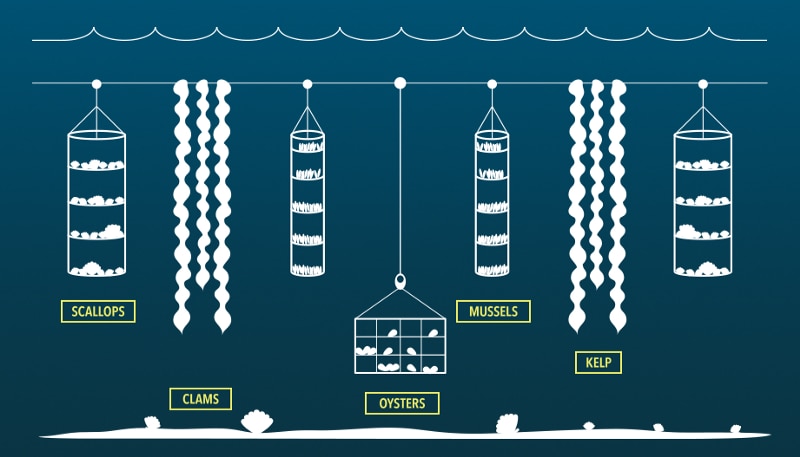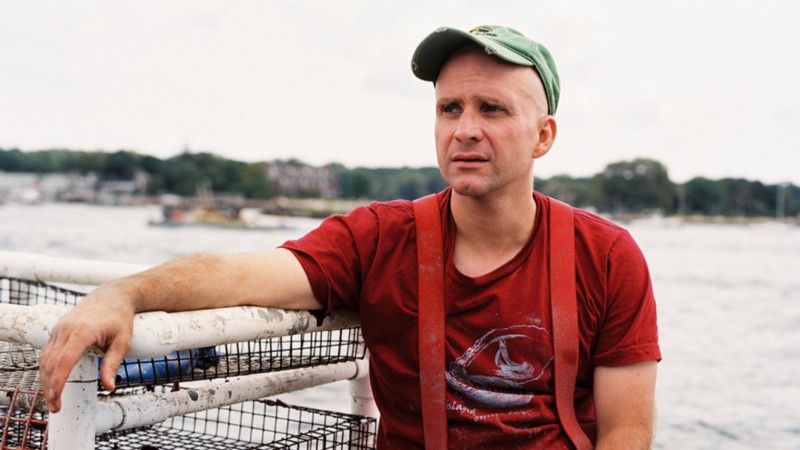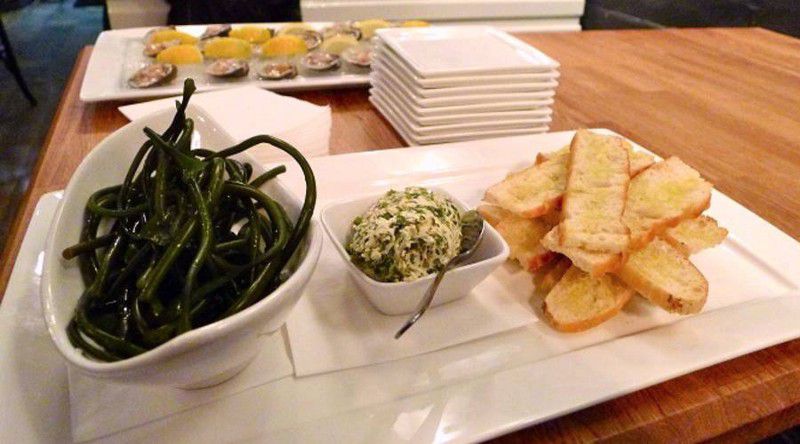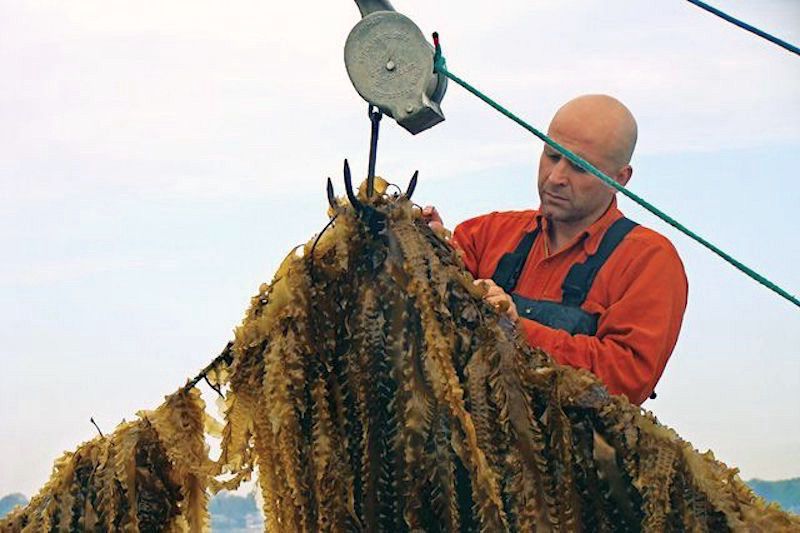Source: popsci.com
Published: December 5, 2016
Ocean-bound entrepreneur envisions ecological restoration and economic revival.
Click here to watch “What is 3D Farming?”: https://youtu.be/NtBaX5oiUSA
Worldwide, farmland consumes an area roughly the size of Canada and the United States put together. It takes that much land to produce enough fruits, vegetables, and grains to feed the world, to say nothing of the millions of acres given over to cows, sheep and other livestock for grazing.
That’s a lot of land, but American entrepreneur Bren Smith says he can cut you a deal. Smith says he can feed the world with an area roughly the size of Washington State. And he wouldn’t need one inch of farmland to do it. The catch? It would have to be a strict diet of shellfish and kelp.
Smith, owner of Thimble Island Ocean Farm, is a pioneer of 3D farming. From the shores of Stony Creek, Connecticut, his outfit looks meager — a single fishing boat bobbing next to a collection of buoys. But beneath the water, food abounds. Leafy fronds of sugar kelp and baskets of clams, oysters and scallops hang from a horizontal line.
“It’s vertical, so we grow a whole water column, and we grow a whole mix of species. We grow two kinds of seaweed, four kinds of shellfish. We harvest salt,” said Bren in an interview. “In a just a 300 by 300 foot area, I can grow 26 tons of kelp in five months.”
Smith started off as an oyster grower, but warming waters stunted yields. Then, Hurricanes Irene and Sandy devastated his operations. “What became clear is that, if this is the new normal, there was no way I was going to survive,” said Smith. “That’s why I went 3D vertical, growing multiple species for many different markets.”
In a lot of ways, 3D ocean farming is the antidote to land- and water-intensive terrestrial agriculture. Drive across the Midwest, and you will see fields upon fields of corn and soybeans, a sprawling monoculture built on synthetic fertilizer. Midwestern farms drain waste into waterways that connect to the Mississippi River. Nitrogen and phosphorous from fertilizer wend their way to the Gulf of Mexico, where they feed vast algae blooms that hoard oxygen, extinguishing all other marine life.

A 3D ocean Farm Foreo
Smith’s underwater farms do the opposite. Kelp scrub nitrogen and phosphorous from the water, helping protect ocean ecosystems. Kelp also wards off ocean acidification, the result of carbon pollution seeping into the ocean, turning waters more acidic. Kelp soaks up carbon, keeping surrounding waters safe for shellfish and other vulnerable creatures. For this reason, Smith’s farms serve as sanctuaries for crab, shrimp and other marine species.

Bren Smith Ron Gautreau
“What we have now on our 20-acre farm is a thriving ecosystem. If you go a hundred yards away, it’s a dead zone basically” he said.
For Smith, the biggest challenge isn’t growing kelp. It’s getting people to eat it. Sea vegetables are a hard sell, even for him: “I’m not a foodie, but they’re kind of disgusting.” Granted, many would say the same of kale, wheatgrass and chia seeds. But each was made palatable, and even trendy, with the right preparation and branding.
Smith wants to do the same for kelp. For this, he recruited chefs like New York’s Brooks Headley, who briefly served a kelp scampi at his vegetarian burger joint, Superiority Burger. Smith sees imagines other possibilities: pickled kelp, kelp linguini, kelp ice cream, kelp cocktails.
“Our seaweed — and this is really the game changer — has more protein than red meat, more iron than red meat, more calcium than milk,” he said.

Pickled kelp, crostini with kelp butter, and clams Thimble Island Oyster Company
If the kale of the sea doesn’t find it’s way to your dinner plate, look for it in your toothpaste, shampoo and — maybe someday — your gas tank. Kelp contains sugars that can be used to make biofuel. With so many applications, kelp has promising future. Smith thinks people should take note.
He believes that anyone with 20 acres of ocean, a boat, and $30,000 can start his own 3D farm, and he wants to bring more people onboard. He founded the non-profit GreenWave to train aspiring ocean farmers and help them access financial grants, seed and gear. Notably, GreenWave will purchase 80 percent of what new farmers produce at triple the market rate for their first five years.

Bren Smith Thimble Island Oyster Company
Smith’s generosity is perhaps a reaction to the hardship he’s faced in his own life. The ocean farmer is asthmatic and epileptic — triggered by alcohol, caffeine and lack of sleep. He dropped out of high school at 14 and, by his own description, he has spent more than a few nights in jail. In his years at sea, he never learned to swim.
Despite these setbacks, Smith has become a trailblazer, and he’s determined to bring others along with him. He sees ocean farmers as the factory workers of the future, members of a new blue-collar middle class. He views the sea as a “major economic driver, major job creator.”
“I don’t want a farm with 1,000 acres. What I want is thousands of fishermen with their own 20 acres and a boat — being able to share infrastructure in order to create biofuel, in order to create kelp noodle,” said Smith. “We’re using mother nature’s technologies in order to build businesses that are actually green and sustainable and really address the climate crisis.”
Jeremy Deaton writes for Nexus Media, a syndicated newswire covering climate, energy, policy, art and culture. You can follow him at @deaton_jeremy.
